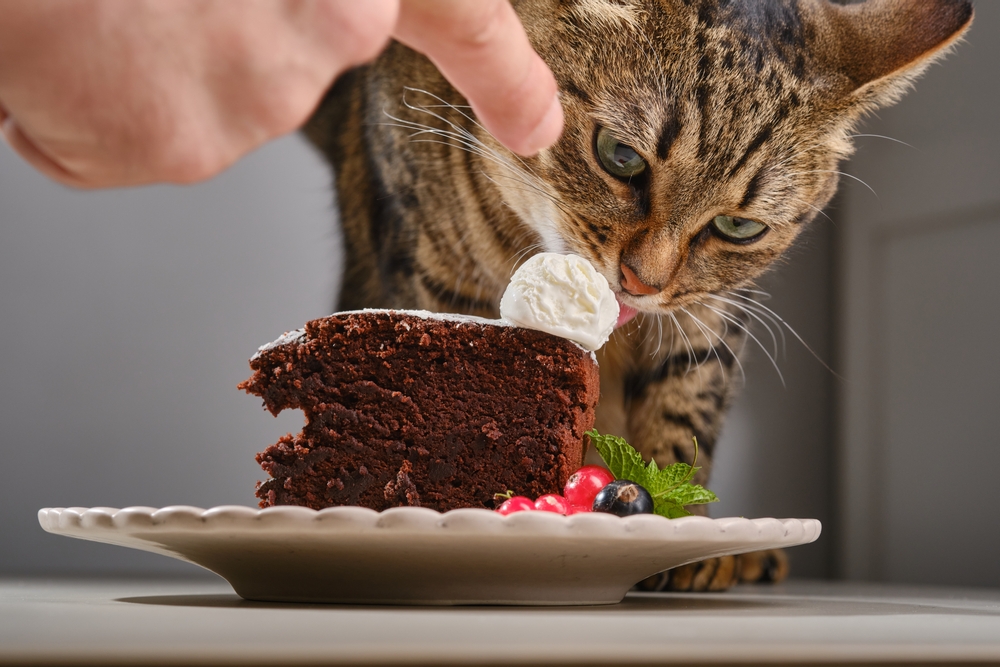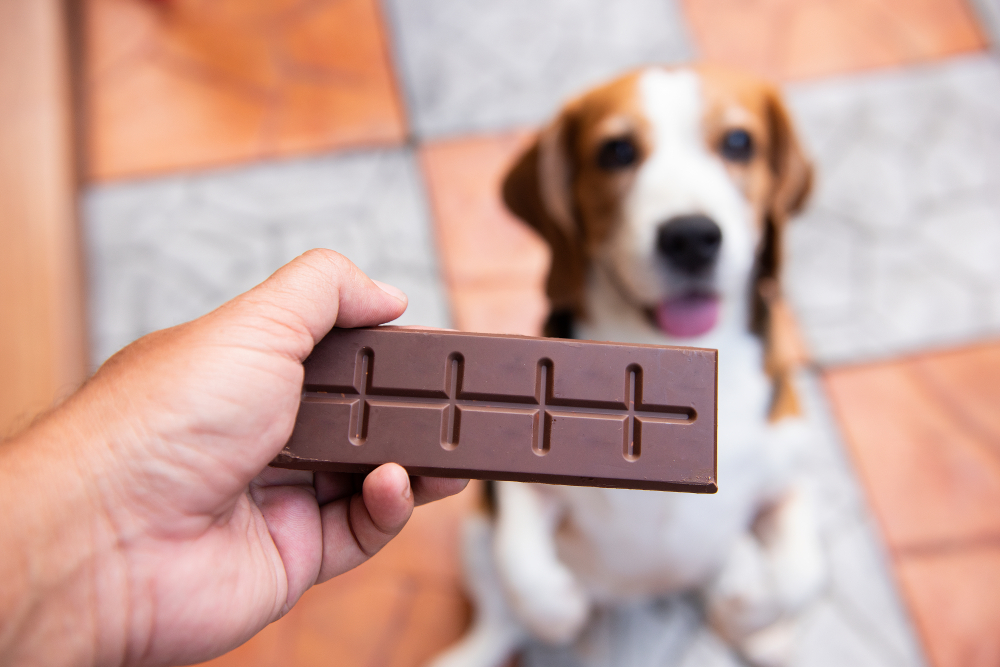Chocolate is an indulgence for most people because, although delicious, this food has little nutritional value compared to other, healthier foods. Still, chocolate is revered the world over, present in most households, and often given as a gift. This easy accessibility, combined with a dog’s creative willingness to seek and consume tasty food, leads to the fact that chocolate toxicity is the fourth most common reason pet owners contact the ASPCA Animal Poison Control Center (APCC).
The APCC gets more than 100 calls per day about chocolate toxicity. Most pet owners understand chocolate is toxic for their pet, but they aren’t aware of the intricacies that determine how much chocolate a dog can safely have and what exactly makes chocolate so dangerous. In honor of National Pet Poison Prevention Month, the Oliver Animal Hospital team is sharing their chocolate toxicity knowledge to help pet owners avoid this potentially life-threatening situation.
What makes chocolate toxic to pets
Chocolate contains two compounds called methylxanthines—theobromine and caffeine— that pets cannot metabolize and that cause exaggerated stimulant effects. These compounds create chocolate’s toxic effects in pets. The darker the chocolate, the more methylxanthines it contains, and the more dangerous it is to your pet.
Cocoa powder, baking chocolate, and cocoa bean hulls used in mulch are the most toxic chocolate types, while white and milk chocolate are the least toxic. Toxicity signs vary depending on your pet’s weight and how much they consume. A small pet who eats baker’s chocolate will become seriously ill, but a large dog who eats a milk chocolate M&M will probably be unaffected.
Chocolate toxicity signs
Low chocolate doses, such as the M&M mentioned above, are unlikely to cause any effect in most pets. The more chocolate a pet eats, however, the more severe their signs—one ounce per one pound of body weight of milk chocolate could be fatal. Mild toxicity results in vomiting and diarrhea, but severe poisoning can affect the heart and nervous system. Signs may include:
- Anxiety, restlessness
- Tremors
- Seizures
- Irregular heartbeat
- High body temperature
- Increased drinking and urination
- Collapse
- Coma
- Death

Chocolate toxicity emergency treatment
If your pet eats chocolate, acting quickly will provide the best possible outcome. You should first contact an animal poison control center or your veterinarian to determine whether your pet’s chocolate dose could harm them. Be prepared to answer questions about the type of chocolate, when it was consumed, and how much your pet ate.
If advised to do so, bring your pet to your primary or emergency veterinarian for care. Once your pet arrives, they may be given the following treatments, depending on how sick they are and the expected toxicity severity:
- Decontamination — Vomit induction, plus or minus activated charcoal administration, can remove some methylxanthines from the body if done shortly after ingestion.
- IV fluids — These will help flush toxins from the bloodstream out through the urine, and can correct electrolyte problems.
- Medications — Medications can counteract nausea, high blood pressure, heart rhythm problems, tremors, and seizures. Sometimes anesthetics are needed to stop seizures and reduce body temperature.
- Hospitalization and monitoring — Moderate to severe toxic exposures require your pet to stay in the hospital for around-the-clock care and monitoring for one to three days, until the toxins have cleared from their system.
Preventing chocolate toxicity
Because severe chocolate toxicity can be life-threatening, keeping chocolate out of your pet’s reach is paramount to their health. Assume that pets can and will try to get to your chocolate stash, and take extra precautions to prevent them from doing so. Try these strategies:
- Store baking supplies in secondary containers and place them in high cabinets.
- Put childproof locks on chocolate-containing cabinets.
- Do not allow children to store candy in their bedrooms.
- Do not leave chocolate-containing items on kitchen counters if pets can reach them. Can your cat knock down the bowl to pets waiting below? Is your dog tall enough to reach the countertops or can they jump onto a nearby chair to get there?
- Never offer pets chocolate-containing foods, including those dusted with cocoa powder.
Everyone loves a good chocolate, but your pet cannot metabolize the stimulant compounds inside. Contact Oliver Animal Hospital, your South Austin vet, to learn more about chocolate toxicity, or if you think your pet ate chocolate and is in need of emergency care. If you need after-hours care or advice, contact the ASPCA Animal Poison Control Center, Pet Poison Helpline, or your nearest veterinary emergency facility.







Leave A Comment